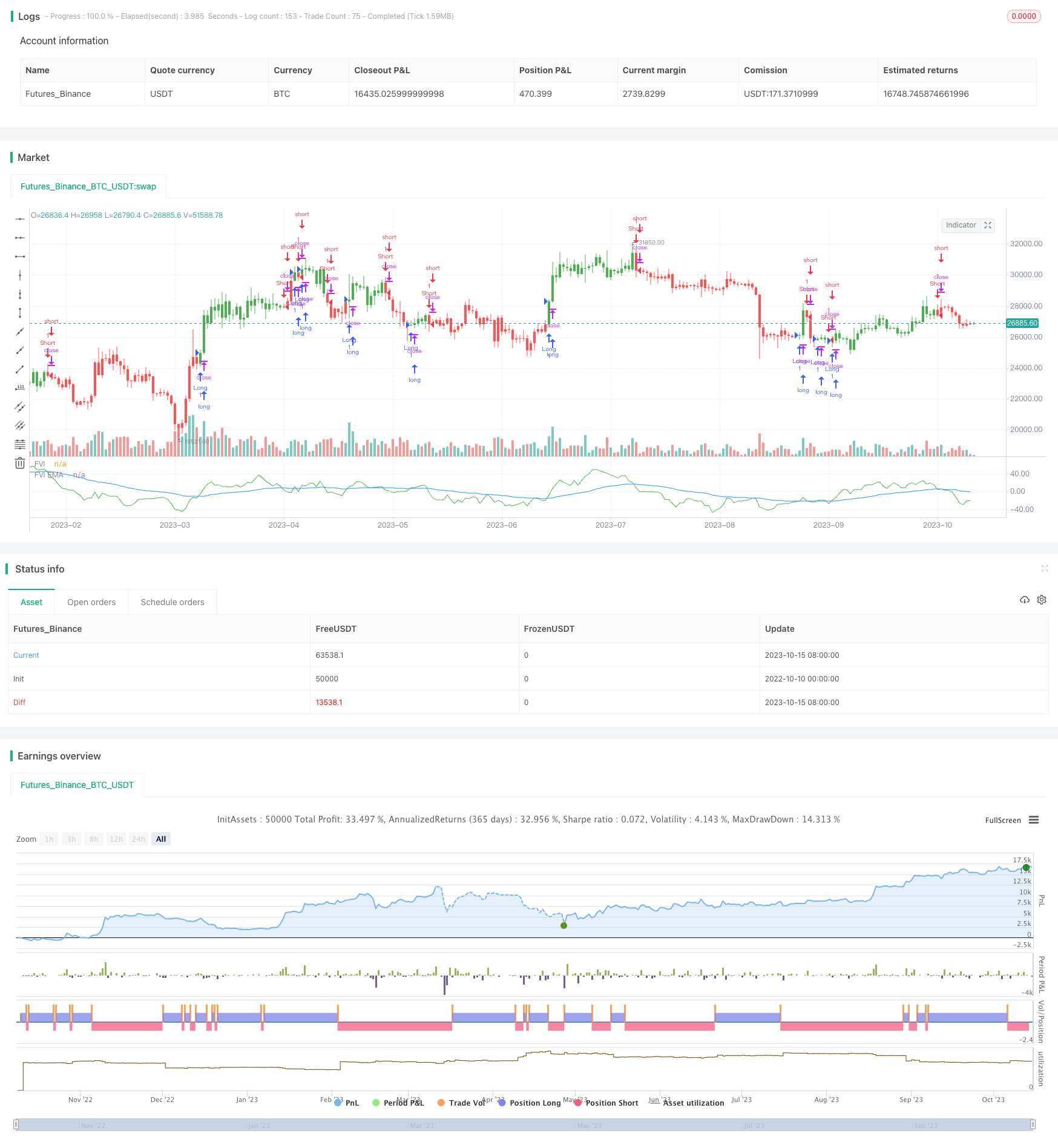適応的ボラティリティに基づく有限体積要素戦略
作成日:
2023-10-17 14:50:13
最終変更日:
2023-10-17 14:50:13
コピー:
0
クリック数:
616
1
フォロー
1621
フォロワー

概要
この戦略は,限られた体積要素の方法を使用し,自適應波動性の測定と組み合わせて,価格変化の多空判断を行う.これは,トレンド追跡型の戦略である.この戦略は,各時間周期に適用され,異なる波動性のレベルに対応してパラメータを自動的に調整することができる.
原則
策略は,先のN根K線の高低平均値,閉店価格平均値,および前K線の高低閉店価格平均値を計算する. そして,現在のK線と前K線の対数リターン率のIntraとInterを計算する. 同時に,IntraとInterの変動性VintraとVinterを計算する.
変動レベルと可調パラメータに基づいて,自適性切断係数CutOffを計算する.価格の変化がCutOffを超えると多空信号を与える.具体的には,現在のK線閉盘価格と高低平均価格の差値MFを計算する.MFがCutOffより大きいときは多頭信号,MFがマイナスである場合のCutOffは空頭信号である.
最後に,シグナルによる資金流向を計算し,シグナル pos を出力し,限定体積要素曲線 FVE を描画する.
利点
- 適応パラメータは,異なる周期と変動レベルに適用され,人為調整を必要としません.
- 価格の動向の変化を正確に捉える
- 有限体積要素曲線は多空力対比を明確に反映している.
- 資金流動の理論的基盤は安定し,信号はより信頼性が高い.
リスク
- 市場が激しく揺れるとき,誤信号がより多く発生する可能性があります. Nパラメータを適切に調整できます.
- 価格の飛躍を処理できない.他の指標を組み合わせて補足することを考えることができます.
- 資金流動理論と技術分析の信号に偏差がある可能性がある.複数の信号の総合判断を考慮することができる.
最適化の方向
- 異なるNのパラメータが結果に影響を及ぼすことをテストすることができる.一般的にはNが大きい値を取って,過剰なノイズをフィルターすることができる.
- Cintra と Cinter の異なる取値をテストして,最適なパラメータの組み合わせを見つけることができる。また,この2つのパラメータを動的に調整することも考えることができる。
- 戦略の安定性を高めるために,MACDなどの他の指標と組み合わせることも考えられます.
- 単一損失を抑えるための ストップダメージメカニズムを 構築できます
要約する
この戦略は,全体的に比較して信頼性があり,原理が優れ,トレンド追跡戦略の構成要素として用いられ,他の戦略と適切に組み合わせた後,効果がより良くなります.鍵は,最適なパラメータを見つけ,良き風制御措置を確立することです.後期に引き続き最適化できれば,非常に強力なトレンド追跡戦略になります.
ストラテジーソースコード
/*backtest
start: 2022-10-10 00:00:00
end: 2023-10-16 00:00:00
period: 1d
basePeriod: 1h
exchanges: [{"eid":"Futures_Binance","currency":"BTC_USDT"}]
*/
//@version=2
////////////////////////////////////////////////////////////
// Copyright by HPotter v1.0 18/08/2017
// This is another version of FVE indicator that we have posted earlier
// in this forum.
// This version has an important enhancement to the previous one that`s
// especially useful with intraday minute charts.
// Due to the volatility had not been taken into account to avoid the extra
// complication in the formula, the previous formula has some drawbacks:
// The main drawback is that the constant cutoff coefficient will overestimate
// price changes in minute charts and underestimate corresponding changes in
// weekly or monthly charts.
// And now the indicator uses adaptive cutoff coefficient which will adjust to
// all time frames automatically.
//
// You can change long to short in the Input Settings
// Please, use it only for learning or paper trading. Do not for real trading.
////////////////////////////////////////////////////////////
strategy(title="Volatility Finite Volume Elements", shorttitle="FVI")
Samples = input(22, minval=1)
Perma = input(40, minval=1)
Cintra = input(0.1, step=0.1)
Cinter = input(0.1, step=0.1)
reverse = input(false, title="Trade reverse")
xhl2 = hl2
xhlc3 = hlc3
xClose = close
xIntra = log(high) - log(low)
xInter = log(xhlc3) - log(xhlc3[1])
xStDevIntra = stdev(sma(xIntra, Samples) , Samples)
xStDevInter = stdev(sma(xInter, Samples) , Samples)
xVolume = volume
TP = xhlc3
TP1 = xhlc3[1]
Intra = xIntra
Vintra = xStDevIntra
Inter = xInter
Vinter = xStDevInter
CutOff = Cintra * Vintra + Cinter * Vinter
MF = xClose - xhl2 + TP - TP1
FveFactor = iff(MF > CutOff * xClose, 1,
iff(MF < -1 * CutOff * xClose, -1, 0))
xVolumePlusMinus = xVolume * FveFactor
Fvesum = sum(xVolumePlusMinus, Samples)
VolSum = sum(xVolume, Samples)
xFVE = (Fvesum / VolSum) * 100
xEMAFVE = ema(xFVE, Perma)
pos = iff(xFVE > xEMAFVE, 1,
iff(xFVE < xEMAFVE, -1, nz(pos[1], 0)))
possig = iff(reverse and pos == 1, -1,
iff(reverse and pos == -1, 1, pos))
if (possig == 1)
strategy.entry("Long", strategy.long)
if (possig == -1)
strategy.entry("Short", strategy.short)
barcolor(possig == -1 ? red: possig == 1 ? green : blue )
plot(xFVE, color=green, title="FVI")
plot(xEMAFVE, color=blue, title="FVI EMA")